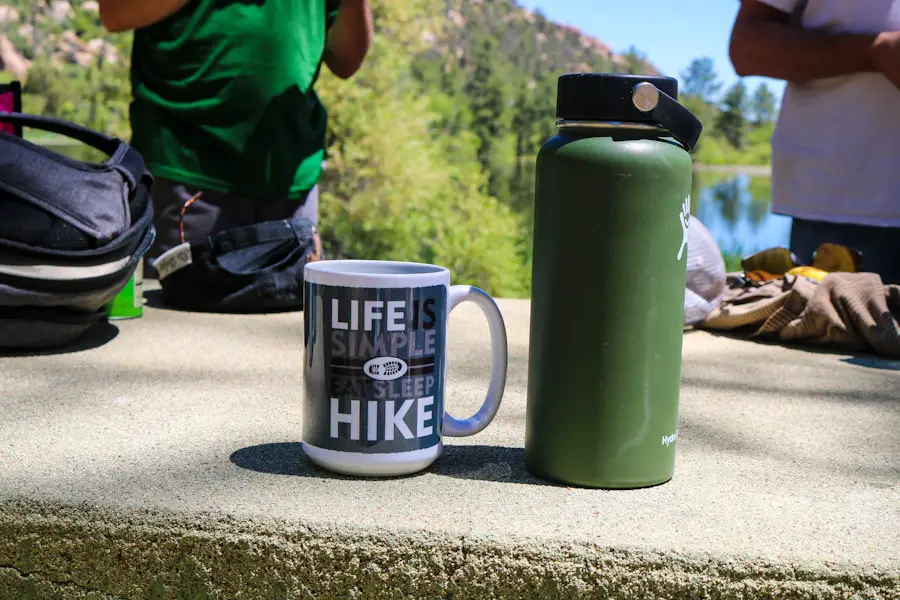Hiking is a multifaceted activity that offers a plethora of benefits for physical fitness. Engaging in this outdoor pursuit not only enhances cardiovascular health but also strengthens muscles and improves flexibility. As individuals traverse various terrains, they engage different muscle groups, particularly in the legs, core, and even the upper body when using trekking poles.
The rhythmic nature of hiking promotes endurance, allowing individuals to build stamina over time. This is particularly beneficial for those looking to improve their overall fitness levels without the monotony often associated with traditional gym workouts. Moreover, hiking is an excellent way to improve mental health alongside physical fitness.
The combination of fresh air, natural surroundings, and physical exertion can significantly reduce stress levels and enhance mood. Studies have shown that spending time in nature can lead to lower levels of anxiety and depression. The act of hiking itself can serve as a form of meditation, allowing individuals to disconnect from daily stressors and reconnect with their surroundings.
This dual benefit of physical and mental well-being makes hiking a unique and holistic approach to fitness.
Key Takeaways
- Hiking improves cardiovascular fitness, muscle strength, and overall physical endurance.
- Factors affecting caloric burn during hiking include body weight, speed, terrain, and elevation.
- Caloric expenditure during hiking can be calculated using various online calculators and fitness trackers.
- Hiking can burn more calories than walking and is comparable to activities like cycling and swimming.
- To maximize caloric burn during hiking, maintain a brisk pace, carry a backpack, and choose challenging terrain.
Factors Affecting Caloric Burn While Hiking
Body Weight and Caloric Expenditure
Heavier individuals tend to burn more calories because they need more energy to move over a given distance. For example, a person weighing 160 pounds may burn approximately 430 calories per hour on a moderate hike, while someone weighing 200 pounds could burn around 550 calories in the same timeframe.
Intensity of the Hike
The intensity of the hike also plays a crucial role in determining caloric burn. Hiking on flat, well-maintained trails will generally result in lower caloric expenditure compared to steep, rugged paths that require more effort and energy.
Other Factors Influencing Caloric Burn
The speed at which one hikes can significantly impact caloric burn; faster-paced hikes elevate heart rates and increase energy expenditure. Weather conditions, such as temperature and humidity, can further influence how many calories are burned during a hike. Hotter temperatures may lead to increased sweating and energy loss, while cooler conditions might allow for more sustained exertion.
Calculating Caloric Expenditure During Hiking

Calculating caloric expenditure during hiking can be approached through various methods, each with its own level of accuracy. One common method involves using metabolic equivalents (METs), which provide a standardized way to estimate energy expenditure based on activity intensity. For example, moderate hiking typically has a MET value of around 6, while vigorous hiking can range from 7 to 9 METs.
To calculate calories burned, one can use the formula: Calories burned = MET value × weight in kg × duration in hours. This formula allows hikers to estimate their caloric burn based on their specific weight and the intensity of their hike. Another method for calculating caloric expenditure is through wearable technology such as fitness trackers or smartwatches.
These devices often utilize heart rate data along with personal metrics like age, weight, and gender to provide real-time estimates of calories burned during physical activities. While these devices can offer valuable insights, it’s important to remember that they may not always be perfectly accurate due to variations in individual metabolism and exercise efficiency. Therefore, combining multiple methods can yield a more comprehensive understanding of caloric expenditure during hiking.
Comparing Hiking to Other Forms of Exercise for Caloric Burn
| Exercise Type | Average Caloric Burn per Hour |
|---|---|
| Hiking | 430-550 calories |
| Running | 600-850 calories |
| Cycling | 400-1000 calories |
| Swimming | 500-700 calories |
| Walking | 280-460 calories |
When comparing hiking to other forms of exercise regarding caloric burn, it becomes evident that hiking holds its own as an effective workout option. For instance, running typically burns more calories per hour than hiking due to its higher intensity; a person weighing 160 pounds may burn around 600 calories running at a moderate pace compared to approximately 430 calories while hiking at a moderate pace. However, hiking offers unique advantages that running does not, such as lower impact on joints and the opportunity for social interaction or solitude in nature.
Cycling is another popular form of exercise that can be compared to hiking in terms of caloric expenditure. A moderate cycling session may burn around 500 calories per hour for an individual weighing 160 pounds. While cycling can be an excellent cardiovascular workout, it lacks the full-body engagement that hiking provides.
Hiking requires balance and coordination as individuals navigate uneven terrain, engaging stabilizing muscles that cycling does not target as effectively. Ultimately, while other forms of exercise may offer higher caloric burn rates, hiking’s holistic benefits make it an appealing choice for many fitness enthusiasts.
Tips for Maximizing Caloric Burn During Hiking
To maximize caloric burn during hiking, several strategies can be employed that enhance both intensity and duration. One effective approach is to incorporate interval training into hikes by alternating between periods of brisk walking or climbing and slower-paced recovery segments. This method not only elevates heart rate but also challenges the body in different ways, leading to increased caloric expenditure over time.
Additionally, choosing trails with varying elevations can further enhance the workout; uphill sections require more energy and thus burn more calories. Another way to increase caloric burn is by adding weight through a backpack or weighted vest. Carrying extra weight forces the body to work harder, resulting in greater energy expenditure.
However, it’s essential to ensure that the added weight is manageable to avoid injury or fatigue. Furthermore, utilizing trekking poles can engage the upper body and core muscles more effectively than hiking without them, contributing to overall caloric burn. Lastly, maintaining a steady pace throughout the hike while incorporating short bursts of speed can keep the heart rate elevated and maximize calorie loss.
Understanding the Role of Terrain and Elevation in Caloric Expenditure

Terrain and elevation are critical factors influencing caloric expenditure during hiking. Steep inclines demand significantly more energy than flat surfaces due to the increased effort required to lift one’s body against gravity. For example, studies have shown that hiking uphill can increase caloric burn by up to 50% compared to walking on level ground.
This is particularly relevant for hikers seeking to enhance their fitness levels; selecting trails with challenging elevation changes can lead to substantial improvements in both strength and endurance. Moreover, different types of terrain—such as rocky paths, sandy trails, or muddy surfaces—can also affect how many calories are burned during a hike. Navigating uneven or unstable ground requires greater balance and muscle engagement, which can elevate heart rates and increase energy expenditure.
Hikers should consider these factors when planning their routes; choosing diverse terrains not only enhances the physical challenge but also adds variety and excitement to the hiking experience.
The Importance of Proper Nutrition for Hiking and Caloric Burn
Proper nutrition plays a pivotal role in maximizing performance during hikes and optimizing caloric burn. Before embarking on a hike, it’s essential to fuel the body with carbohydrates that provide readily available energy. Foods such as whole grains, fruits, and energy bars are excellent pre-hike options that help sustain energy levels throughout the trek.
Additionally, staying hydrated is crucial; dehydration can lead to decreased performance and increased fatigue, ultimately affecting caloric expenditure. During longer hikes, consuming snacks that combine carbohydrates with protein can help maintain energy levels and prevent muscle breakdown. Trail mix containing nuts and dried fruits or energy gels designed for endurance athletes are popular choices among hikers looking to sustain their performance over extended periods.
Post-hike nutrition is equally important; replenishing lost nutrients with a balanced meal rich in proteins and carbohydrates aids recovery and prepares the body for future hikes.
Incorporating Hiking into a Balanced Fitness Routine
Incorporating hiking into a balanced fitness routine can provide numerous benefits while keeping workouts enjoyable and varied. For individuals who may find traditional gym workouts monotonous or uninspiring, hiking offers an opportunity to engage with nature while still achieving fitness goals. It can serve as an excellent complement to other forms of exercise such as strength training or yoga; alternating between these activities allows for comprehensive fitness development that targets different muscle groups and promotes overall well-being.
Additionally, setting specific hiking goals—such as completing a certain number of miles per week or tackling increasingly challenging trails—can help maintain motivation and accountability within a fitness routine. Joining local hiking clubs or participating in group hikes can also foster social connections while encouraging regular participation in this beneficial activity. By integrating hiking into a broader fitness regimen, individuals can enjoy its myriad benefits while cultivating a sustainable approach to health and wellness that lasts over time.
If you’re planning on going hiking and want to know how many calories you’ll burn, check out this article on portable camping stoves for your upcoming adventures. It’s important to fuel your body properly while hiking, and having the right equipment can make all the difference.
Love travel? Join Our Facebook Community
FAQs
What is hiking?
Hiking is a form of outdoor physical activity that involves walking on trails or paths in natural environments such as forests, mountains, or countryside.
How many calories does hiking burn?
The number of calories burned during hiking depends on various factors such as the individual’s weight, the intensity of the hike, and the terrain. On average, a person can burn between 430-550 calories per hour of hiking.
What factors affect the number of calories burned during hiking?
Factors that can affect the number of calories burned during hiking include the individual’s weight, the speed and intensity of the hike, the incline and terrain of the trail, and the presence of a backpack or other gear.
Is hiking a good way to burn calories and lose weight?
Yes, hiking can be an effective way to burn calories and contribute to weight loss. It provides a full-body workout and can be a more enjoyable alternative to traditional forms of exercise.
Are there any health benefits to hiking?
Hiking offers numerous health benefits, including improved cardiovascular health, increased muscle strength and endurance, stress reduction, and mental well-being. It also provides an opportunity for exposure to nature and fresh air.
